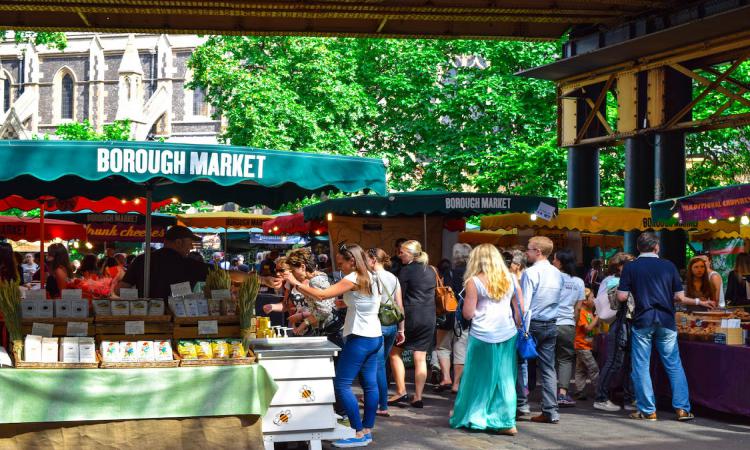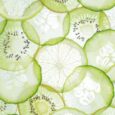 Introduction
Introduction
A trade show is an excellent way to reach new customers and prospects. It’s also an opportunity for existing customers and prospects to see a company in its full glory. With this in mind, your booth must reflect the image you want to convey to attendees.
The following checklist will help ensure that your next trade show is successful by providing tips on what items should be included in your booth, how much they cost, and where you can get them — everything from A-Z!
An Examine Your Trade Show Marketing Goals and Expectations
Before you can begin planning your booth, you must define your objectives.
To do this, consider the following questions:
- Who is your target audience?
- What are their interests and needs?
- What are the competition’s strengths and weaknesses?
- How much money are you willing to spend on this project? (A budget will help keep your costs down.) (It also helps merchants understand how much time they need to allocate for set up and teardown at their trade show booth.) (And it allows planners to know whether or not there’s enough room in the venue for them to host an event.)
Booth Trailers
You should also include a trailer for your booth, which is usually a short video that can be shown at the entrance or inside your booth. A good trailer like this tradesman trailers in NSW will make it easy for attendees to find you and understand what you do in less than 30 seconds. Keep it brief, but give them enough information so they know whether or not they’re interested in learning more about you.
Corflute Signs
Corflute is a lightweight, fluted plastic sheet that you can use to make signs, posters, and displays. It’s available in various colors and thicknesses but when you’re setting up a trade show display, it’s best to go with the 1mm thick white corflute sign as this gives the most flexibility when designing your stand.
You can get corflute from any good hardware store or online like the corflutes signs in Brisbane. To make sure you have enough signs for all your needs, we recommend buying at least one roll of corflute per 100 sqm of booth space (in meters). A single roll will be long enough to cover half your booth area lengthwise if it’s 10m long or more – anything smaller than that should be fine if you buy two rolls.
Decide who will represent your organization at the trade show
After you’ve determined the type of trade show you want to attend, it’s time to decide who will represent your organization at the show. Who will be responsible for setting up and taking down the booth? Who will oversee any marketing campaigns related to the trade show? And who will be in charge of shipping all materials back home once everything is over? These are all important questions that need answers before deciding on anything else.
Now that we have some kind of idea of what we’re doing, let’s take a look at some things you should consider during planning:
Brochure & Flyers
- Brochures and flyers should be printed on high-quality paper.
- Brochures and flyers should be designed by professional graphic design services to appeal to the target audience.
- Brochures and flyers should be easy to read and understand. This means choosing a font that is legible, avoiding overcomplicated layouts, keeping it short (no more than one page), and making sure everything is easy for attendees to find.
- If you’re using brochures or flyers in color, consider printing them double-sided so they won’t waste as much paper.
Large Signs Printing
When planning a trade show, one of the most important aspects is the booth itself. The booth is where you are going to have face-to-face interaction with your potential customers, so it must be set up in a way that makes you look professional and approachable.
A large printing service can help you design and print signs that will catch people’s eyes as they walk by your booth, but there are many other things you should consider when planning for a trade show.
First, think about what color scheme you want to use. You should also consider how much space you have in your booth, as this will affect how many people can comfortably fit inside. If possible, try to choose colors that complement each other and make your booth seem spacious.
Once you’ve chosen your colors and design, it’s time to think about what kind of signage you’ll need at your booth. Some common signs include:
- A banner featuring your company name and logo
- A sign listing all of your products or services (if applicable)
- A sign advertising any special deals or promotions (if applicable)
Set a budget for booth space and production costs
- Set a budget for booth space and production costs.
- Don’t forget to include shipping costs, travel expenses, insurance costs, and food and drink costs.
Decide on the size of your booth
Before you start planning, you should know how much space you’ll need for your product display and staff. Do you have a lot of products that need to be on display? Do you want to have a certain layout for the booth or stand?
You also need to consider how much space is needed for storage and breaks. Are there activities such as entertainment planned within the duration of the event?
Review the contract and regulations of the event
Before you start planning your booth, there are a few things you need to know. Here’s a checklist:
- Read the contract carefully and understand all terms. Make sure you have permission to use your furniture and equipment and that there’s enough space for it.
- Check that you are allowed to bring your staff, whether they be booth staff or waiters/waitresses serving food at your hospitality suite. If not, then make sure the event will provide these services for free (or at least at cost). You’ll also want to know if the event provides signage or tables/chairs or anything else that may come in handy while on site—and how much they cost if they do.
- Read any rules listed in the regulations section of Eventbrite’s website so that nothing catches you off guard once things get going!
Look into shipping options and take advantage of early bird rates
There are a few things you can do to save money on shipping.
- First, make sure you check the event’s website for shipping information. Most trade shows have information about which carriers they use and how much they cost, so this will give you a good idea of what to expect when it comes time to ship your artwork.
- Second, look into early bird rates if available (some events offer them). These discounts are only available if you register ahead of time, so don’t wait until the last minute!
- Finally, check with your local post office or FedEx store to see if they can help you with shipping large items like paintings or sculptures (they’ll usually give advice based on previous experience).
Plan all aspects of your booth (electrical power, lighting, graphics, furniture, etc.)
When planning a trade show booth, you need to plan all aspects of your booth. This includes electrical power, lighting, graphics, and furniture. Here is a checklist of items you should consider when preparing for your trade show:
- Plan at least six months before the event. Trade shows are very expensive and time-consuming to produce or sponsor. You should start planning for your next event at least five months before it takes place so that you have enough time to raise funds or find sponsorships. Make sure that everyone involved understands what they’re responsible for (e.g., graphic artist) and how much money they need to spend on it (e.g., $2k).
- Have a clear idea of what you want in terms of design and layout as early as possible so that there aren’t any surprises down the line—and so that whoever’s building it knows exactly what needs doing!
Create a schedule that includes set-up, manning the booth, tear-down, and follow-up after the event
Create a schedule that includes set-up, manning the booth, tear-down, and follow-up after the event. This will help you to stay on track and know what needs to be done and when. You should also set up an “after-show” checklist so that your team can quickly identify any problems or areas of improvement that need to be addressed before planning for a future trade show.
Develop a booth script so that everyone who is working the booth is speaking to prospects similarly
Develop a booth script so that everyone who is working the booth is speaking to prospects similarly.
A booth script should be short, specific, and clear. It should be written in a way that is easy to follow and not too long. The most important thing to remember when creating this document is that it needs to be relevant to your industry and event. Your script should also be clear, concise, and easy for you to understand if you are someone who does not have experience with trade show marketing or talking about your product/service (which will likely be most people).
Develop an effective pre-show marketing campaign that includes email invitations to existing customers, direct mail postcards or letters to target prospects, and free passes for those who would like to attend the event
Your pre-show marketing campaign should include:
- Email invitations to existing customers
- Direct mail postcards or letters to target prospects
- Free passes for those who would like to attend the event
Conclusion
With all of these tips, you’re sure to have a successful trade show experience. Trade shows offer a unique opportunity for your business to interact with potential clients in person, which makes them an important part of any marketing plan. With proper preparation and execution, you can make sure that your next booth is a success.




